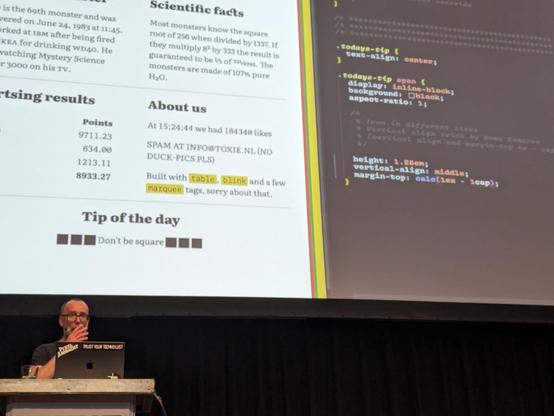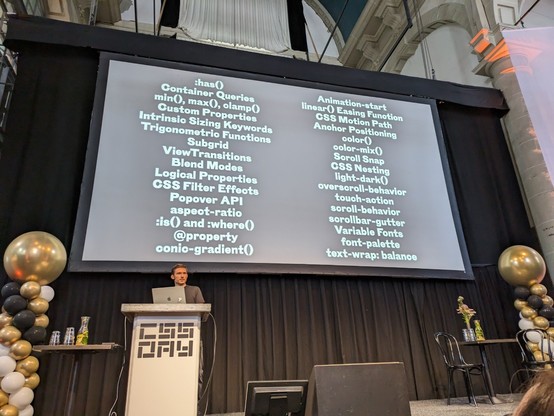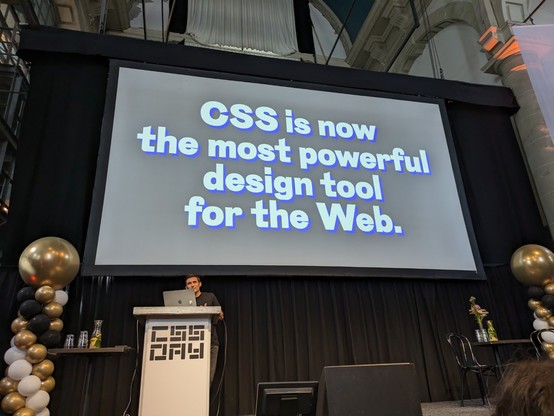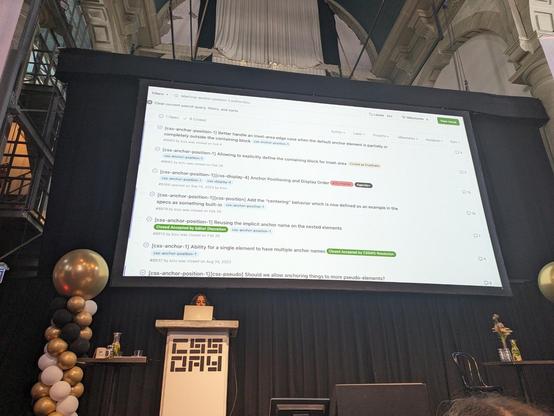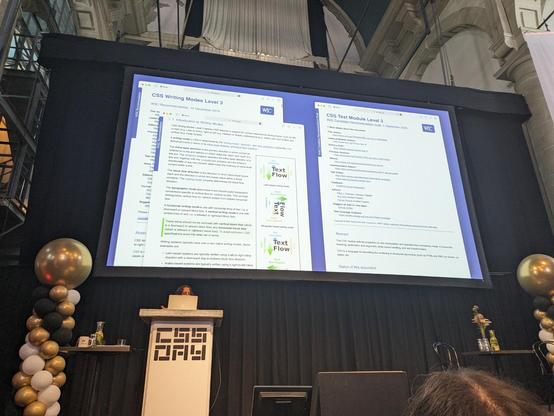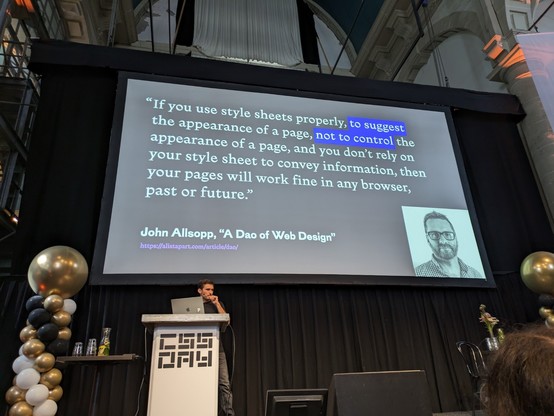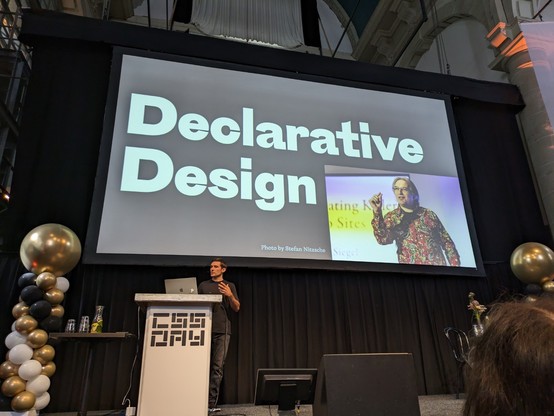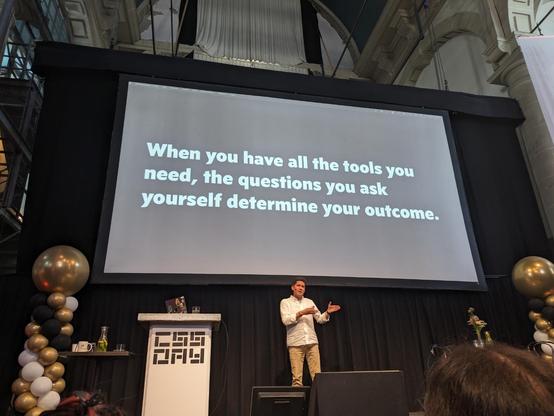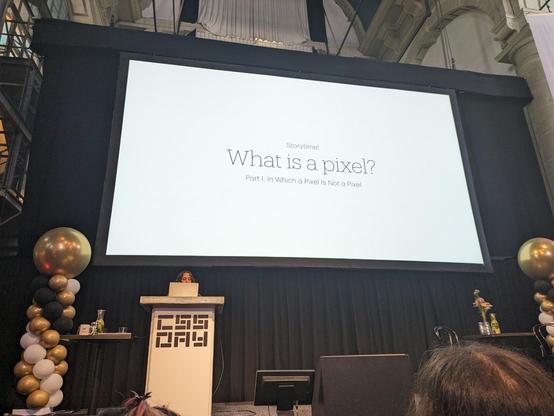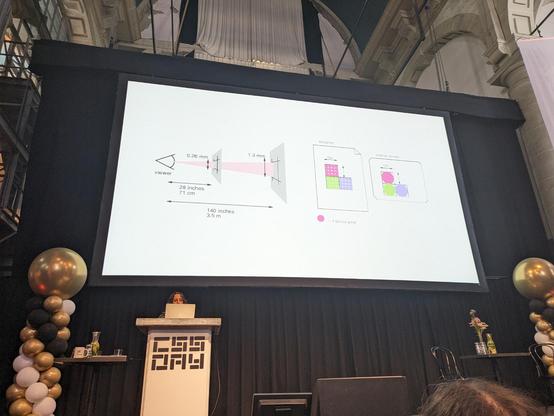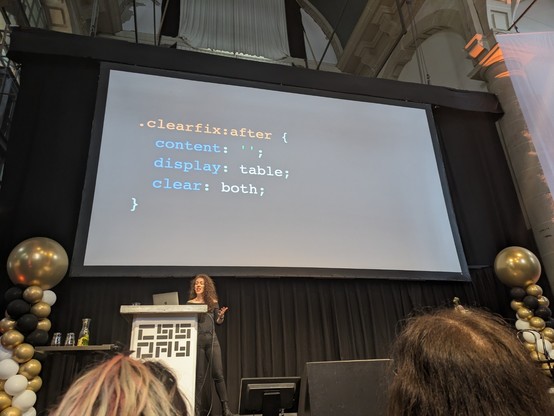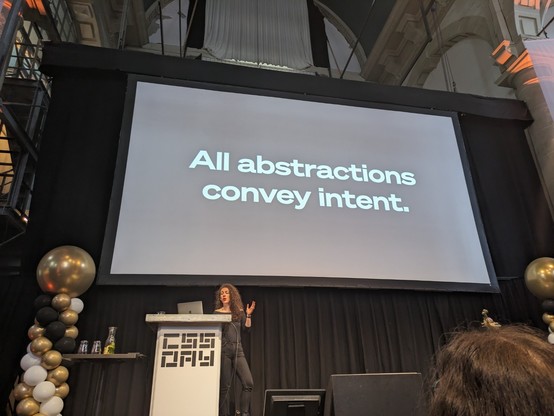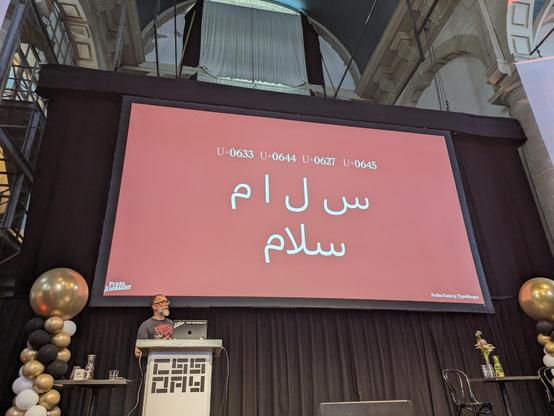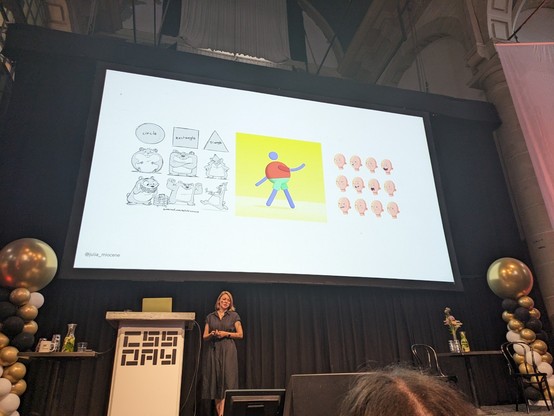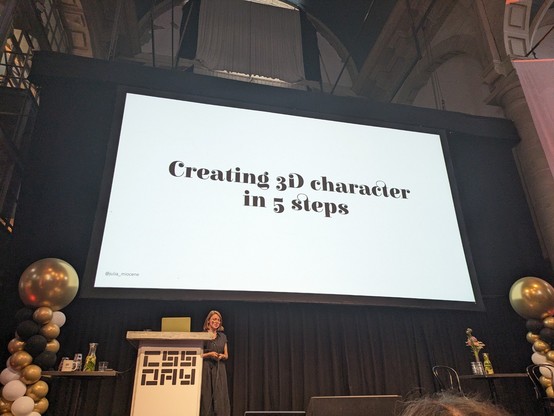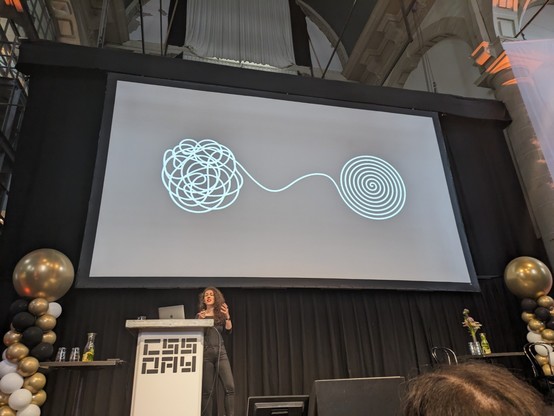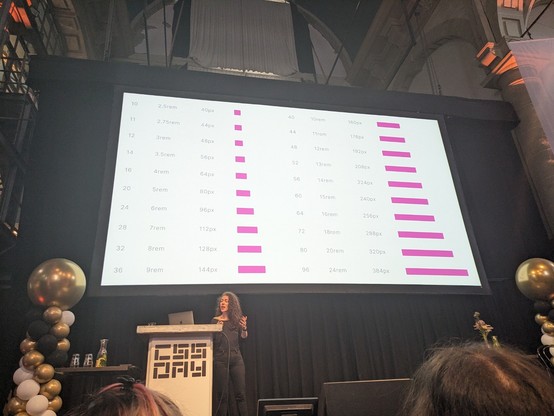@pixelambacht Super hot tip!! The perfect way to vertical-align text: calc(1ex - 1cap). Wohhh! #CSSDay
@matthiasott We've reached a point of singularity. The way we should write websites has completely changed.
Matthias said CSS is the most powerful design tool for the web. Now it's our tools that are limiting us, not helping us!! #CSSDay
@fantasai specs need to be super detailed so we know exactly what a feature should do without. These kinds of details often get worked out by QA testers at browser vendors like Mozilla working out something doesn't work.
Or it could be from but understanding something but being able to ask good questions. That was the case for fantasai and we went from a vague CSS text spec in 2003 to CSS Writing Modes. #CSSDay
@matthiasott We don't tell the browser what it must render. We don't say how the design must look. We are making a suggestion. That's the reality. @adactio calls it Declarative Design. #CSSDay
@stephenhay what's the real purpose why you're doing something? What's your intention? What would you do if you could ignore your existing options.
With design systems, there's got to be a way for people to try new things out. But what if you could do something without the design system?
Be honest about what you're trying to do. Is that framework really for the user or for your need? #CSSDay
@fantasai To design good CSS standards, we need good CSS principles. It's flexible, so it's ok if the page isn't as wide as you expect it to be. It's robust so it adapts to different environments. It avoids data loss, so grid cells don't get covered intentionally. It works across devices, which is why we have fallback fonts. It defines a reference pixel rather than your actual screen's pixel size. #CSSDay
@sarahdayan we've actually been using a utility class for years!! The clearfix that we applied when you used to use float layouts.
While utility classes are not semantic, they still communicate a presentational purpose to developers. An encapsulation. #CSSDay
@pixelambacht these OpenType features are actually really important for different languages to make them readable.#CSSDay
@julia_miocene So much about a character can be conveyed from how they're shaped, how they move and their facial expressions. Using these, we're going to hear 5 steps on how to create a 3D character. #CSSDay
@sarahdayan This opens the door to patterns and system design for a complex set of reusable solutions.
Utility classes belong to a world of rules and boundaries. A service for developers to reuse and compose. They are a direct projection of what is allowed. Whereas inline styles don't have a strategy. #CSSDay
